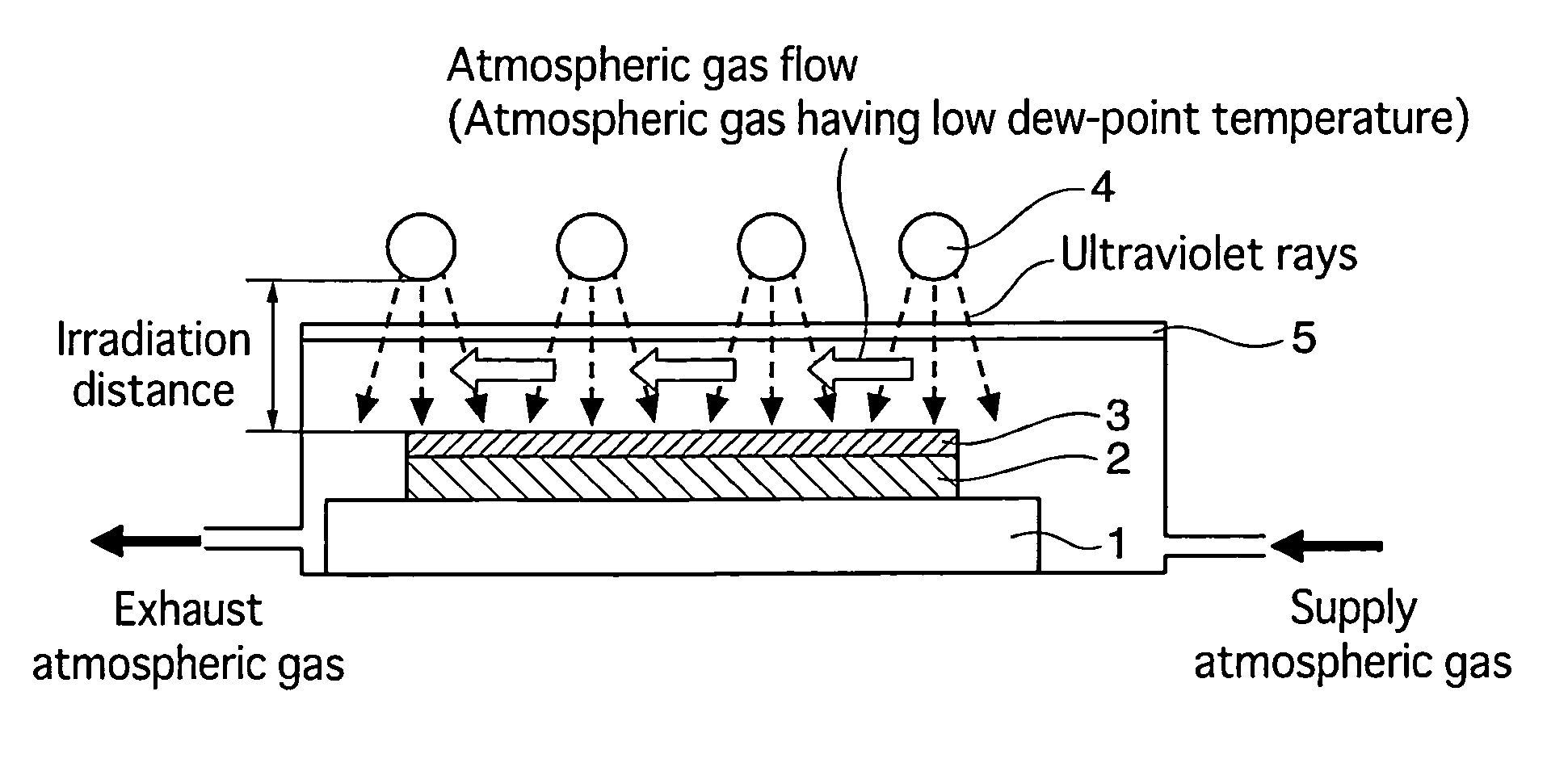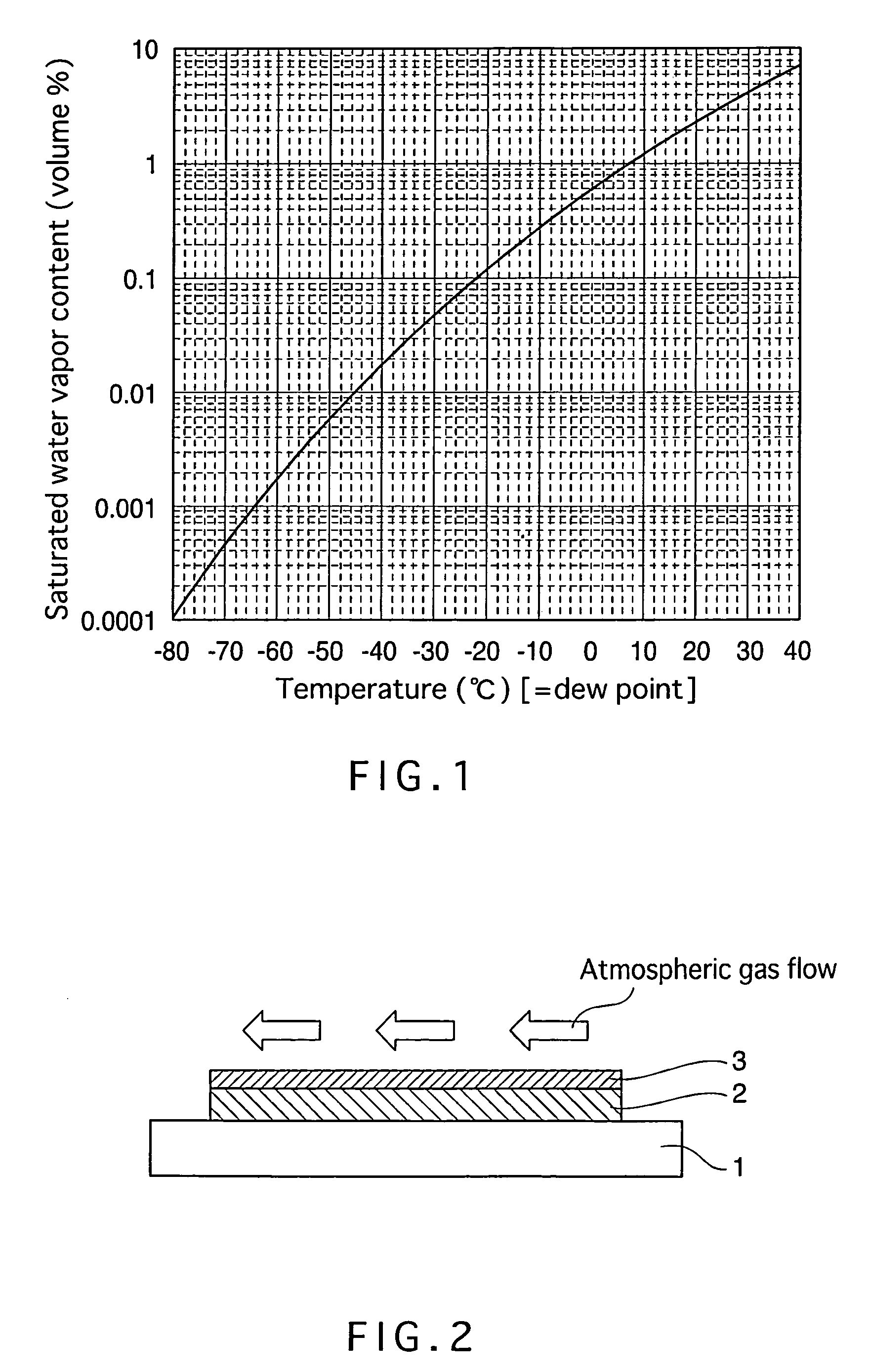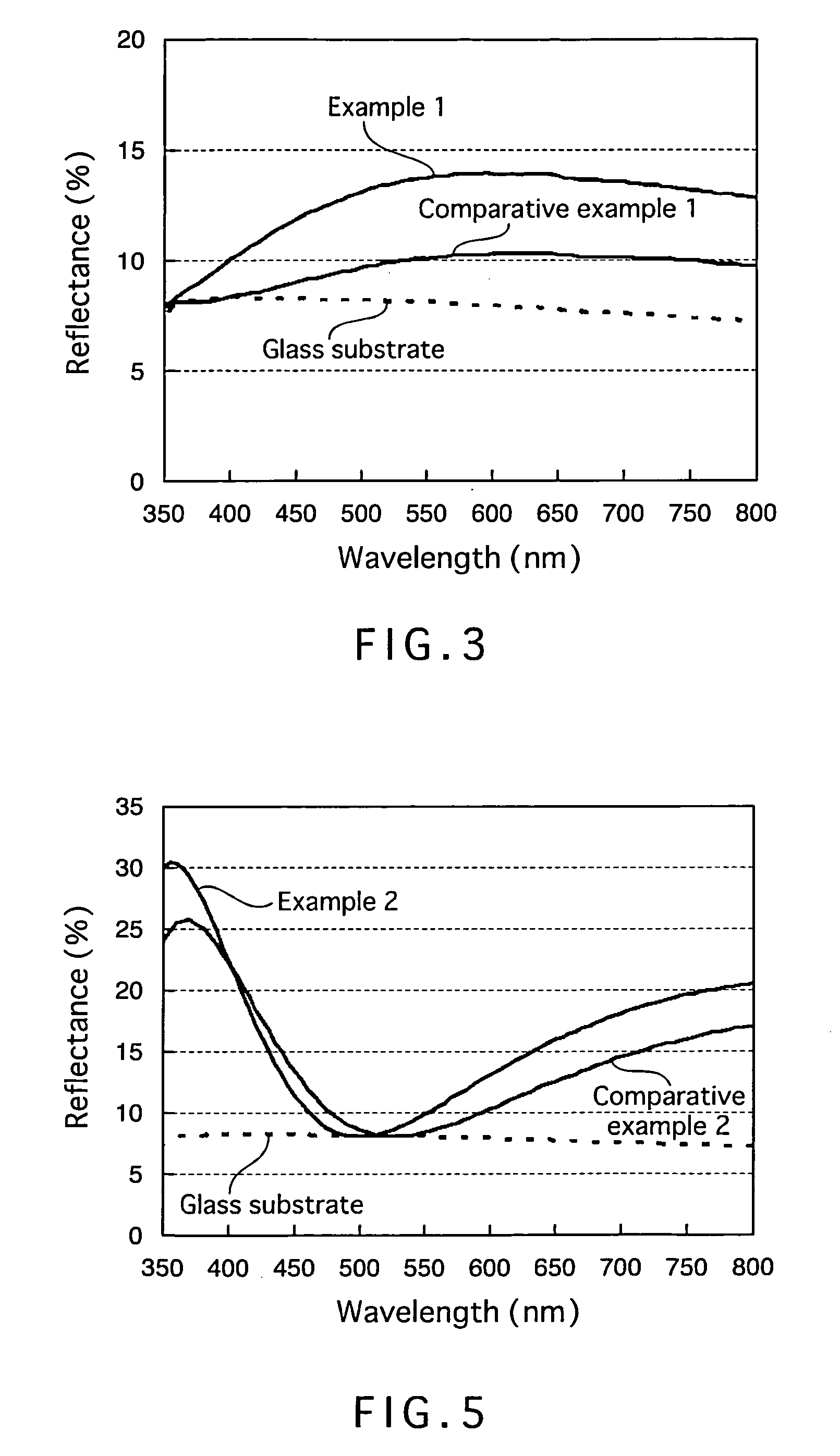Method of manufacturing metal oxide film
a technology of metal oxide film and manufacturing method, which is applied in the direction of lanthanide oxide/hydroxide, natural mineral layered products, niobium compounds, etc., can solve the problems of high cost of vacuum container base, high manufacturing cost and mass production, corrosion of facilities, etc., and achieve excellent film strength and high density
- Summary
- Abstract
- Description
- Claims
- Application Information
AI Technical Summary
Benefits of technology
Problems solved by technology
Method used
Image
Examples
example 1
[0236][Formulation of Coating Liquid]
[0237]10 g of hafnium-n-butoxide (liquid at room temperature) [Hf(OC4H9)4](molecular weight=470.95), 14 g of N-methyl-2-pyrrolidone (NMP), 25 g of diethylene glycol monoethyl ether (ethyl carbitol), and 1 g of hydroxypropylcellulose (HPC; low molecular weight type) were mixed together, heated to 120° C., and agitated for 60 minutes for dissolution. Next, 50 g of the obtained solution, 43 g of ethyl alcohol (EA), and 7 g of isopropyl alcohol (IPA) were mixed together and agitated well until they became uniform, thereby formulating a coating liquid for forming metal oxide film containing 10 weight % of hafnium-n-butoxide and 1 weight % of hydroxypropylcellulose. The viscosity of this coating liquid for forming metal oxide film (25° C.) was approximately 10 mPa·s.
[0238][Fabrication of Metal Oxide Film]
[0239]After spin coating (500 rpm×30 sec) was performed with the formulated coating liquid for forming metal oxide film on an entire surface of a soda...
example 2
[0251][Formulation of Coating Liquid]
[0252]10 g of niobium-n-butoxide (liquid at room temperature) [Nb(C4H9O)5](molecular weight=458.12), 14 g of N-methyl-2-pyrrolidone (NMP), 25 g of diethylene glycol monoethyl ether (ethyl carbitol), and 1 g of hydroxypropylcellulose (HPC; low molecular weight type) were mixed together, heated to 120° C., and agitated for 60 minutes for dissolution. Next, 50 g of the obtained solution, 43 g of ethyl alcohol (EA), and 7 g of isopropyl alcohol (IPA) were mixed together and agitated well until they became uniform, thereby formulating a coating liquid for forming metal oxide film containing 10 weight % of niobium-n-butoxide and 1 weight % of hydroxypropylcellulose. The viscosity of this coating liquid for forming metal oxide film (25° C.) was approximately 10 mPa·s.
[0253]After spin coating (500 rpm×30 sec) was performed with the formulated coating liquid for forming metal oxide film on an entire surface of a soda lime glass substrate (10 cm×10 cm×thic...
example 3
[0256][Formulation of Coating Liquid]
[0257]10 g of zirconium-n-butoxide (liquid at room temperature) [Zr(C4H9O)4](molecular weight=383.68), 14 g of N-methyl-2-pyrrolidone (NMP), 25 g of diethylene glycol monoethyl ether (ethyl carbitol), and 1 g of hydroxypropylcellulose (HPC; low molecular weight type) were mixed together, heated to 120° C., and agitated for 60 minutes for dissolution. Next, 50 g of the obtained solution, 43 g of ethyl alcohol (EA), and 7 g of isopropyl alcohol (IPA) were mixed together and agitated well until they became uniform, thereby formulating a coating liquid for forming metal oxide film containing 10 weight % of zirconium-n-butoxide and 1 weight % of hydroxypropylcellulose. The viscosity of this coating liquid for forming metal oxide film (25° C.) was approximately 10 mPa·s.
[0258]The film was formed in a manner similar to that of Example 2 except that this coating liquid for forming metal oxide film was used, thereby fabricating a metal oxide film accordin...
PUM
| Property | Measurement | Unit |
|---|---|---|
| temperature | aaaaa | aaaaa |
| dew-point temperature | aaaaa | aaaaa |
| dew-point temperature | aaaaa | aaaaa |
Abstract
Description
Claims
Application Information
 Login to View More
Login to View More - R&D
- Intellectual Property
- Life Sciences
- Materials
- Tech Scout
- Unparalleled Data Quality
- Higher Quality Content
- 60% Fewer Hallucinations
Browse by: Latest US Patents, China's latest patents, Technical Efficacy Thesaurus, Application Domain, Technology Topic, Popular Technical Reports.
© 2025 PatSnap. All rights reserved.Legal|Privacy policy|Modern Slavery Act Transparency Statement|Sitemap|About US| Contact US: help@patsnap.com



